Inhibition of spinal microglial cathepsin S for the reversal of neuropathic pain
- PMID: 17551020
- PMCID: PMC1965568
- DOI: 10.1073/pnas.0610811104
Inhibition of spinal microglial cathepsin S for the reversal of neuropathic pain
Abstract
A recent major conceptual advance has been the recognition of the importance of immune system-neuronal interactions in the modulation of brain function, one example of which is spinal pain processing in neuropathic states. Here, we report that in peripheral nerve-injured rats, the lysosomal cysteine protease cathepsin S (CatS) is critical for the maintenance of neuropathic pain and spinal microglia activation. After injury, CatS was exclusively expressed by activated microglia in the ipsilateral dorsal horn, where expression peaked at day 7, remaining high on day 14. Intrathecal delivery of an irreversible CatS inhibitor, morpholinurea-leucine-homophenylalanine-vinyl phenyl sulfone (LHVS), was antihyperalgesic and antiallodynic in neuropathic rats and attenuated spinal microglia activation. Consistent with a pronociceptive role of endogenous CatS, spinal intrathecal delivery of rat recombinant CatS (rrCatS) induced hyperalgesia and allodynia in naïve rats and activated p38 mitogen-activated protein kinase (MAPK) in spinal cord microglia. A bioinformatics approach revealed that the transmembrane chemokine fractalkine (FKN) is a potential substrate for CatS cleavage. We show that rrCatS incubation reduced the levels of cell-associated FKN in cultured sensory neurons and that a neutralizing antibody against FKN prevented both FKN- and CatS-induced allodynia, hyperalgesia, and p38 MAPK activation. Furthermore, rrCatS induced allodynia in wild-type but not CX3CR1-knockout mice. We suggest that under conditions of increased nociception, microglial CatS is responsible for the liberation of neuronal FKN, which stimulates p38 MAPK phosphorylation in microglia, thereby activating neurons via the release of pronociceptive mediators.
Conflict of interest statement
The authors declare no conflict of interest.
Figures
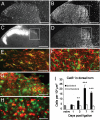
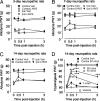
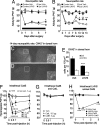
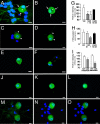
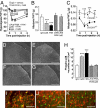
Similar articles
-
The liberation of fractalkine in the dorsal horn requires microglial cathepsin S.J Neurosci. 2009 May 27;29(21):6945-54. doi: 10.1523/JNEUROSCI.0828-09.2009. J Neurosci. 2009. PMID: 19474321 Free PMC article.
-
p38 mitogen-activated protein kinase is activated after a spinal nerve ligation in spinal cord microglia and dorsal root ganglion neurons and contributes to the generation of neuropathic pain.J Neurosci. 2003 May 15;23(10):4017-22. doi: 10.1523/JNEUROSCI.23-10-04017.2003. J Neurosci. 2003. PMID: 12764087 Free PMC article.
-
Role of the CX3CR1/p38 MAPK pathway in spinal microglia for the development of neuropathic pain following nerve injury-induced cleavage of fractalkine.Brain Behav Immun. 2007 Jul;21(5):642-51. doi: 10.1016/j.bbi.2006.11.003. Epub 2006 Dec 15. Brain Behav Immun. 2007. PMID: 17174525 Free PMC article.
-
Microglial signalling mechanisms: Cathepsin S and Fractalkine.Exp Neurol. 2012 Apr;234(2):283-92. doi: 10.1016/j.expneurol.2011.09.012. Epub 2011 Sep 17. Exp Neurol. 2012. PMID: 21946268 Review.
-
Role of the immune system in neuropathic pain.Scand J Pain. 2019 Dec 18;20(1):33-37. doi: 10.1515/sjpain-2019-0138. Scand J Pain. 2019. PMID: 31730538 Review.
Cited by
-
TMEM16F Regulates Spinal Microglial Function in Neuropathic Pain States.Cell Rep. 2016 Jun 21;15(12):2608-15. doi: 10.1016/j.celrep.2016.05.039. Cell Rep. 2016. PMID: 27332874 Free PMC article.
-
SPOCK2 modulates neuropathic pain by interacting with MT1-MMP to regulate astrocytic MMP-2 activation in rats with chronic constriction injury.J Neuroinflammation. 2024 Feb 22;21(1):57. doi: 10.1186/s12974-024-03051-5. J Neuroinflammation. 2024. PMID: 38388415 Free PMC article.
-
Neuron-glia crosstalk in health and disease: fractalkine and CX3CR1 take centre stage.Open Biol. 2013 Dec 18;3(12):130181. doi: 10.1098/rsob.130181. Open Biol. 2013. PMID: 24352739 Free PMC article. Review.
-
Proteolysis of prion protein by cathepsin S generates a soluble beta-structured intermediate oligomeric form, with potential implications for neurotoxic mechanisms.Eur Biophys J. 2009 Feb;38(2):209-18. doi: 10.1007/s00249-008-0371-3. Epub 2008 Sep 24. Eur Biophys J. 2009. PMID: 18813919
-
Spinal Cathepsin S promotes visceral hypersensitivity via FKN/CX3CR1/p38 MAPK signaling pathways.Mol Pain. 2023 Jan-Dec;19:17448069231179118. doi: 10.1177/17448069231179118. Mol Pain. 2023. PMID: 37347150 Free PMC article.
References
-
- Scholz J, Woolf CJ. Nat Neurosci. 2002;5:1062–1067. - PubMed
-
- Gilron I, Max MB. Exp Rev Neurother. 2005;5:823–830. - PubMed
-
- Watkins LR, Maier SF. Nat Rev Drug Discovery. 2003;2:973–985. - PubMed
-
- Tsuda M, Inoue K, Salter MW. Trends Neurosci. 2005;28:101–107. - PubMed
-
- Barclay J, Clark A, Ganju P, Gentry C, Patel S, Wotherspoon G, Buxton F, Chuanzheng S, Ullah J, Winter J, et al. Pain. 2007 in press. - PubMed
Publication types
MeSH terms
Substances
Grants and funding
LinkOut - more resources
Full Text Sources
Other Literature Sources
Medical
Molecular Biology Databases
Research Materials
Miscellaneous

